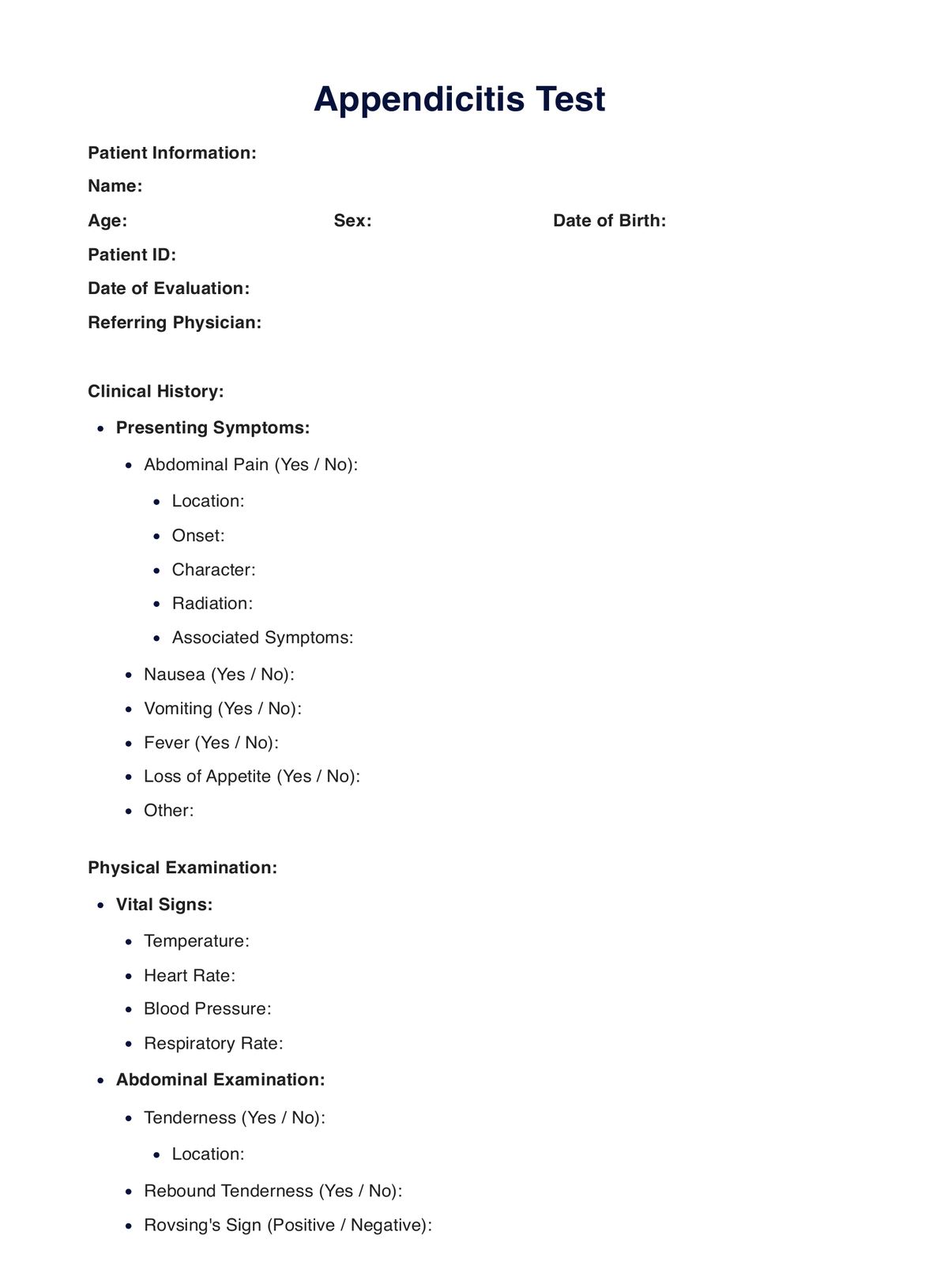Usually, a doctor or healthcare provider will request an appendicitis test if they suspect a patient has appendicitis based on their symptoms.

Appendicitis
Explore Appendicitis Test Methods by Carepatron. Understand how physical exams, lab work, and imaging can help diagnose appendicitis efficiently and accurately.
Use Template
Appendicitis Template
Commonly asked questions
Appendicitis tests are used when a patient presents with symptoms that suggest they might have appendicitis.
Appendicitis tests are part of a diagnostic process to confirm or rule out appendicitis.
EHR and practice management software
Get started for free
*No credit card required
Free
$0/usd
Unlimited clients
Telehealth
1GB of storage
Client portal text
Automated billing and online payments











